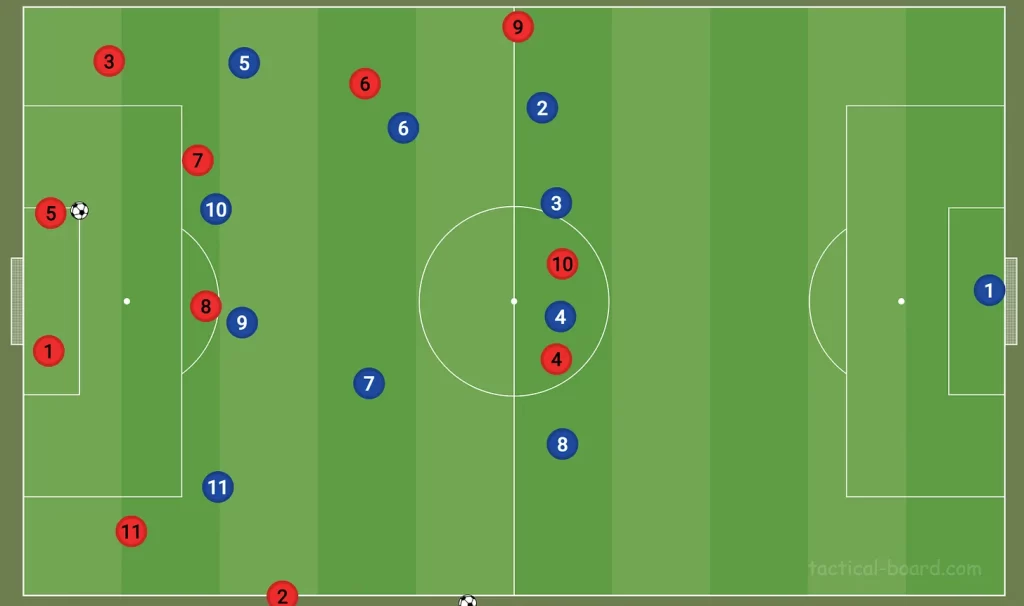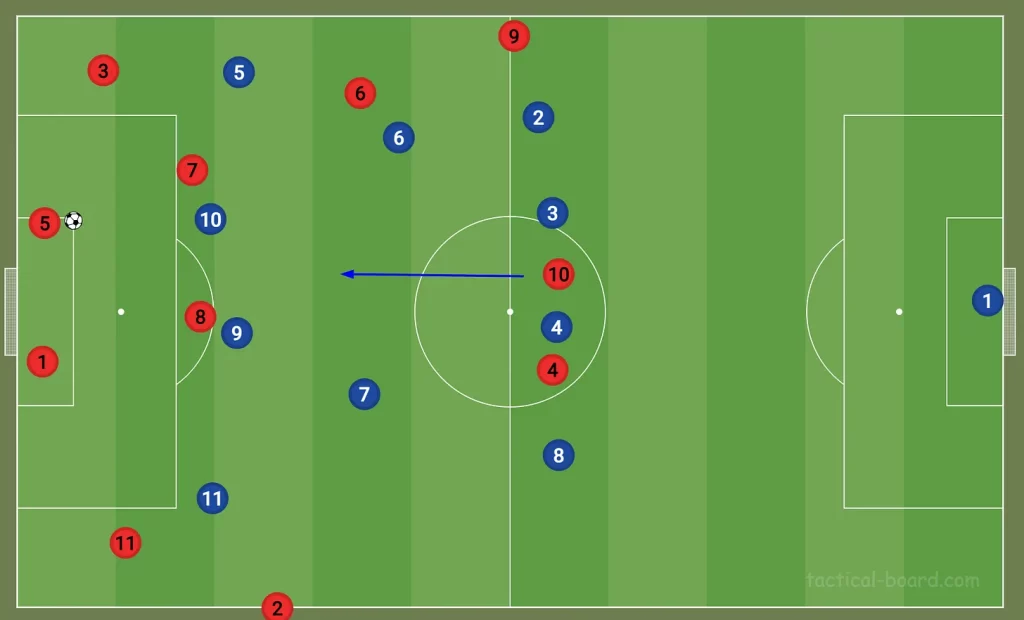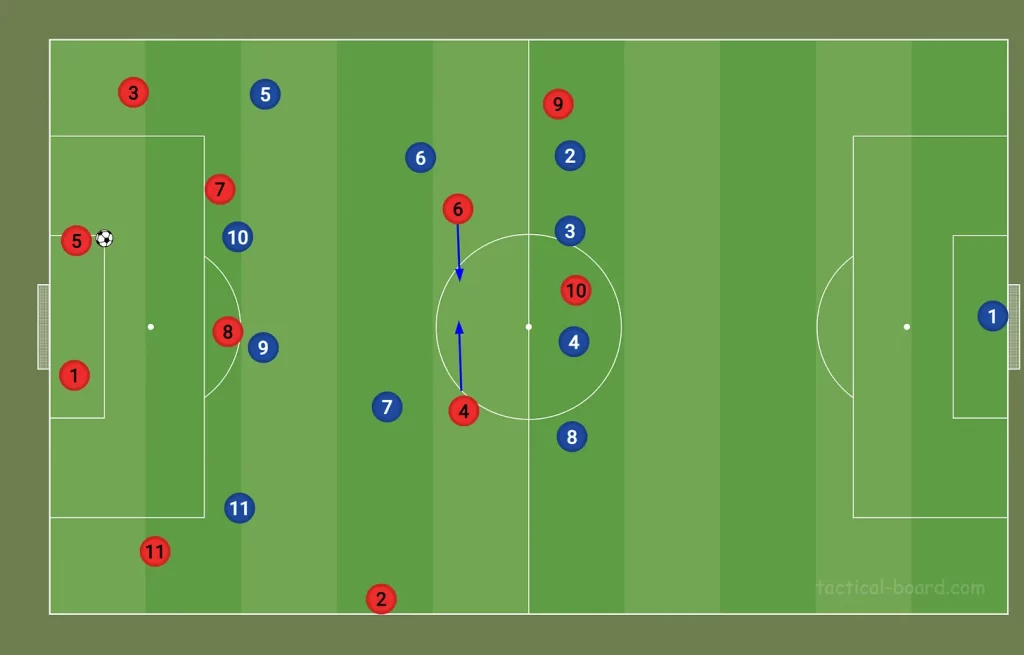“Embracing change and innovation can lead to sustained success in a high-performing environment.”

I was listening to the insightful discussion between Dave Carolan and Gary Rowett on the Breaking Lines Podcast. I began to contemplate the complexities of human behavior in high-performance football, or for that matter, any sports environment, and the key factors that contribute to sustained success. Notably, Gary Rowett’s observation regarding the necessity of introducing new perspectives and voices to maintain a team’s momentum and enthusiasm, particularly following a successful season, resonated with my own experiences.
To give you more context, I have had the privilege of managing the first team at Karachi United for the past four years. During this period, the team underwent a notable transformation. While the first three years were trophy-less, the most recent season turned out to be highly successful, with us securing four trophies. Like every other successful or unsuccessful team, post-season provides an opportunity to bolster the squad, and we felt the need to push ahead for a new striker to fully maximise our potential in front of goal. At the start of the new season, a sense of fulfillment seemed to set in, accompanied by a noticeable decline in the team’s hunger and desire. This shift in mindset became apparent in the initial games that followed, but it wasn’t the only thing holding the team back. There were structural issues due to the stylistic differences between the new and the previous striker.
As the saying goes by “Sometimes you have to lose your way to find your way,” resonates profoundly in our case. The initial setbacks we encountered served as a catalyst, sparking a renewed sense of determination and urgency within the squad. As we sought to adapt and succeed with our new signing, a collective desire to make it work ignited a fire that drove us forward. The arrival of this player necessitated a structural overhaul, as our existing framework was not tailored to maximize his strengths. This transformation not only revitalized the team’s passion and drive but also reignited the spark that had begun to fade following our triumphant season and presented us with a valuable opportunity for growth, innovation, and rediscovery.
With the context established, let’s delve into the tactical nuances of our team’s approach. In our original system, we employed a deep back four, comprising the goalkeeper, two center-backs, and a left-back, while our right-back was positioned higher up the pitch. Two holding midfielders anchored the team at the edge of the box, providing immediate support to help build up play and attract opposition defences (as the ultimate objective of our in possession phase is to draw opponents closer to our goal and give us the chance to generate “false” counterattacks). The right-back provided width on the right flank, while the left winger was positioned high and wide on the opposition’s defensive line. A left-sided attacking midfielder occupied the half-space, closer to the touchline, to provide support on the left side and compensate for the deep-lying left-back. Up front, a striker and right forward operated in the space between the opposition’s center-back and full-back. As the build-up phase progressed, our system would fluidly transition into a shape resembling a 3-2-5 formation.

Our team is in the Red building out from the back.
The left-sided attacking midfielder’s positioning in the half-space attracted opposition midfielders, creating space for the striker to drop into midfield. This allowed the striker to link play and penetrate into the final third, as shown in the image and video below.

Striker dropping in midfield to link play.
It was pretty evident after the first three games of our season that the previous model won’t work. Unlike our previous striker, the new one was not comfortable dropping deep to receive the ball and link play, nor was he good at crashing the box to arrive for crosses. Instead, he thrived in the space behind the opposition’s defense, utilizing his pace and movement to finish off chances. The arrival of our new striker in turn forced us to implement a change in our playing style, one that leveraged his exceptional ability to make runs in behind the opposition’s defense and be relatively closer to the goal. The video below shows footage from the 2nd game of the season, where we were playing with our new striker and the original structure.
To optimize the team’s structure, we implemented a tactical adjustment. We tweaked the position of the left-sided attacking midfielder to a central role and transformed the right forward into a right attacking midfielder with the two midfielders operating in tandem, positioned close to each other. The left winger was given a free role to move inside and operate on the shoulder of the full back rather than always staying wide on the touch line. This setup achieved several key objectives:
1. It allowed the striker to maintain a high position, closer to the goal.
2. If the defenders were drawn to the two attacking midfielders, it created space for the striker to operate freely.
3. The central positioning of the attacking midfielders facilitated combinations and interplay.
4. It enabled the team to open up spaces on the wings or play through balls to the striker and the winger
The outcome of this adjustment is illustrated in the picture and video below.

These experiences have led me to reflect on the intricacies of human behavior in high-performance environments and the factors that contribute to sustained success. In our case, the introduction of a new signing, coupled with a series of disappointing results and a structural overhaul, reignited our passion and drive to learn and adapt.
Notably, a tactical change implemented shortly after the new signing’s arrival yielded significant benefits. Although the striker suffered an injury a couple of games later, the player who replaced him, who we never thought of as someone who would thrive in our new system, surprisingly capitalized on its advantages. Our team’s chance creation reached unprecedented levels, with an extraordinary sequence of 8 games yielding 31 goals, including 4 victories where we scored 5 or more goals – a feat previously unseen in our team’s history.
This raised a couple of fascinating questions: (1) why had we never considered using this structure all these years, (2) why do we coaches often prioritize like-for-like replacements, when a new player can bring a fresh perspective, inject unpredictability, and force us to innovate and grow? While I don’t have definitive answers, further inquiry might provide some insight. Are our preconceptions about the team, player quality, and tactics limiting our options? Are we hesitant to implement significant changes due to concerns that the adaptation period may lead to short-term performance dips, thereby accumulating pressure on the team? Or does our reluctance stem from a more inherent human tendency to resist changes that disrupt our comfort zones? Possibly it is a combination of all these factors and more. For now, I’ll savor our team’s evolution and perhaps delve into this topic in greater detail some time in the future.
 (021) 35140679
(021) 35140679
 digital@karachiunited.com
digital@karachiunited.com
